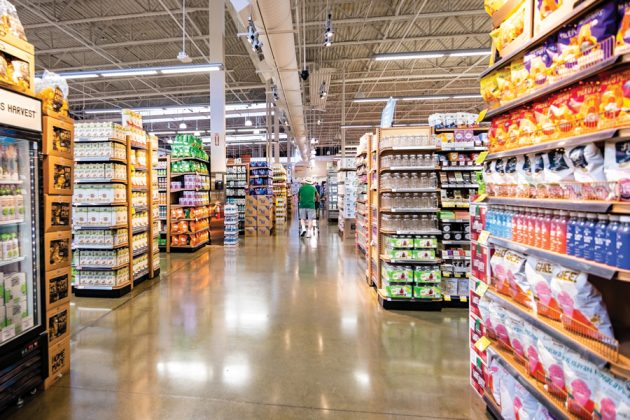
Recipe to Retail: Merchandising matters
By Birgit Blain
Business Operations Brand marketing Editor pick Merchandising Retail Photo © Sundry Photography / Adobe Stock
Photo © Sundry Photography / Adobe Stock For brand owners selling through retail channels, it’s critical to squeeze out time for store visits. In-store reviews provide valuable insights to identify and address issues affecting sales.
Let’s look at merchandising. Analyzing planograms reveals strategies employed by retailers as well as a brand’s competitors. A wealth of insights can be gleaned, such as category segmentation, leading brands, breadth of private label programs, changing competitive landscape, brand positioning and differentiation, target demographics, packaging formats and pricing and promotion strategies.
Retail chains determine product shelf placement based on merchandising strategies for each banner and category. Planograms typically reflect category segmentation, sales velocity, profitability and how a category is shopped, with a goal to optimize sales and profit.
Location, location, location
Consider whether your brand is merchandised in the right category. With nonstop product launches, the assortment shifts, and new categories emerge. It’s worth investigating if a different category presents better opportunities to drive sales. For example, merchandising salad toppers in fresh produce instead of centre store.
Think like a retailer
Impactful package design that stands out from the competition is a no-brainer. Also, think about merchandising and build in flexibility to accommodate different scenarios when designing packaging.
For products in cartons, having a secondary display panel gives stores merchandising options. A box of spaghetti can be displayed two different ways if the panels meet minimum labelling requirements.
The simple addition of a hang hole makes pouches and cartons peggable, providing display alternatives.
Ensure package dimensions fit the shelf slot. Packaging that is too tall is relegated to the top or bottom shelf, impairing visibility and accessibility.
An excessively wide package takes up valuable linear shelf space that could otherwise accommodate two or more facings. For retailers, the more facings the better. Is the case pack appropriate? Ensure a full case of product fits within the allotted space. Alternatively, too small a case can sell through quickly and reduce on-shelf availability.
Retail ready packaging (RRP) is favoured by grocery chains for labour and cost savings. Walmart coined the phrase “PDQ (Pretty Darn Quick) display” for shelf-ready shipping cases that make restocking a breeze.
Think strategically
Premium product placement in the “bull’s eye zone”, which is at or just below eye-level, is reserved for leading brands that can afford to pay for the privilege. In the absence of deep pockets, brands that satisfy an unmet need and/or generate incremental sales may be able to negotiate better shelf placement.
Lone products on a shelf, referred to as orphans, are best avoided. If a brand only has one sku in a category, the item will get lost on shelf.
When developing a marketing strategy, consider category segmentation. Leading brands and store brands are often merchandised in a block, creating a “billboard effect” with heightened shelf impact. However, a brand comprising multiple segments within a category can result in items being scattered across the set. For example, conventional, gluten-free and organic products will likely be merchandised by segment, rather than in a block.
Ensure on-shelf availability
Out-of-stocks kill sales. Don’t assume it’s the retailer’s fault. It’s important to identify the root cause, which can be due to a variety of supply chain factors. Even data integrity issues can disrupt order fulfillment. Don’t overlook missing shelf tags—no tag, no replenishment. Paying distributors or brokers to provide store support can be a worthwhile investment.
In conclusion, shelf-ready brands that eliminate merchandising obstacles have a stronger chance of making it into shopping carts, and thereby maintaining the listing.
As a CPG food consultant, Birgit Blain gets brands ready for retail. Her experience includes 17 years with Loblaw Brands and President’s Choice. Contact her at birgit@bbandassoc.com or learn more at www.bbandassoc.com.
This article was originally published in the February/March 2022 issue of Food in Canada.
Print this page